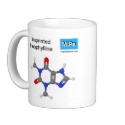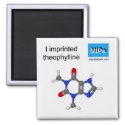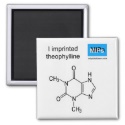|
|
Reference type: Journal
Authors: Chough SH, Park KH, Cho SJ, Park HR
Article Title: In situ preparation of powder and the sorption behaviors of molecularly imprinted polymers through the complexation between polymer ion of methyl methacrylate/acrylic acid and Ca++ ion.
Publication date: 2014
Journal: Analytica Chimica Acta
Volume: 841
Page numbers: 84-90.
DOI: 10.1016/j.aca.2014.05.044
Alternative URL: http://www.sciencedirect.com/science/article/pii/S0003267014006667
Abstract: Molecularly imprinted polymer (MIP) powders were prepared using a simple complexation strategy between the polymer carboxylate groups and template molecule followed by metal cation cross-linking of residual polymer carboxylates. Polymer powders were formed in situ by templating carboxylic acid containing polymers with 4-ethylaniline (4-EA), followed by addition of an aqueous CaCl2 solution. The solution remained homogeneous. The powders were prepared by precipitation by slowly adding a non-solvent, H2O, to the mixture. The resulting particles were very porous with uptake capacity that approached the theoretical value. We suggest two types of complexes are formed between the template, 4-EA, and polymer. The isolated entry type forms well defined cavities for the template with high specific selectivity, while the adjacent entry type forms wider binding sites without specific sorption for isomeric molecules. To evaluate conditions for forming materials with high affinity and selectivity, three MIPs were prepared containing 0.5, 1.0, and 1.5 equivalents of template to the base polymer. The MIP containing 0.5 eq showed higher specific selectivity to 4-EA, but the MIP containing 1.5 eq had noticeably lower selectivity. The lower selectivity is attributed to poorly formed binding sites with little selective sorption to any isomer when the higher ratio of template was used. However at the lower ratio of template the isolated entry is preferably formed to produce well defined binding cavities with higher selectivity to template
Template and target information: 4-ethylaniline, 4-EA
Author keywords: Moleculaly imprinted polymer (MIP), In situ MIP powder, Complexation of MIP, Polymer metal ion complex, Ethylaniline, selective sorption
|


 theophylline template mug ball and stick
theophylline template mug ball and stick







 I imprinted theophylline magnet ball and stick
I imprinted theophylline magnet ball and stick







 I imprinted theophylline magnet
I imprinted theophylline magnet






